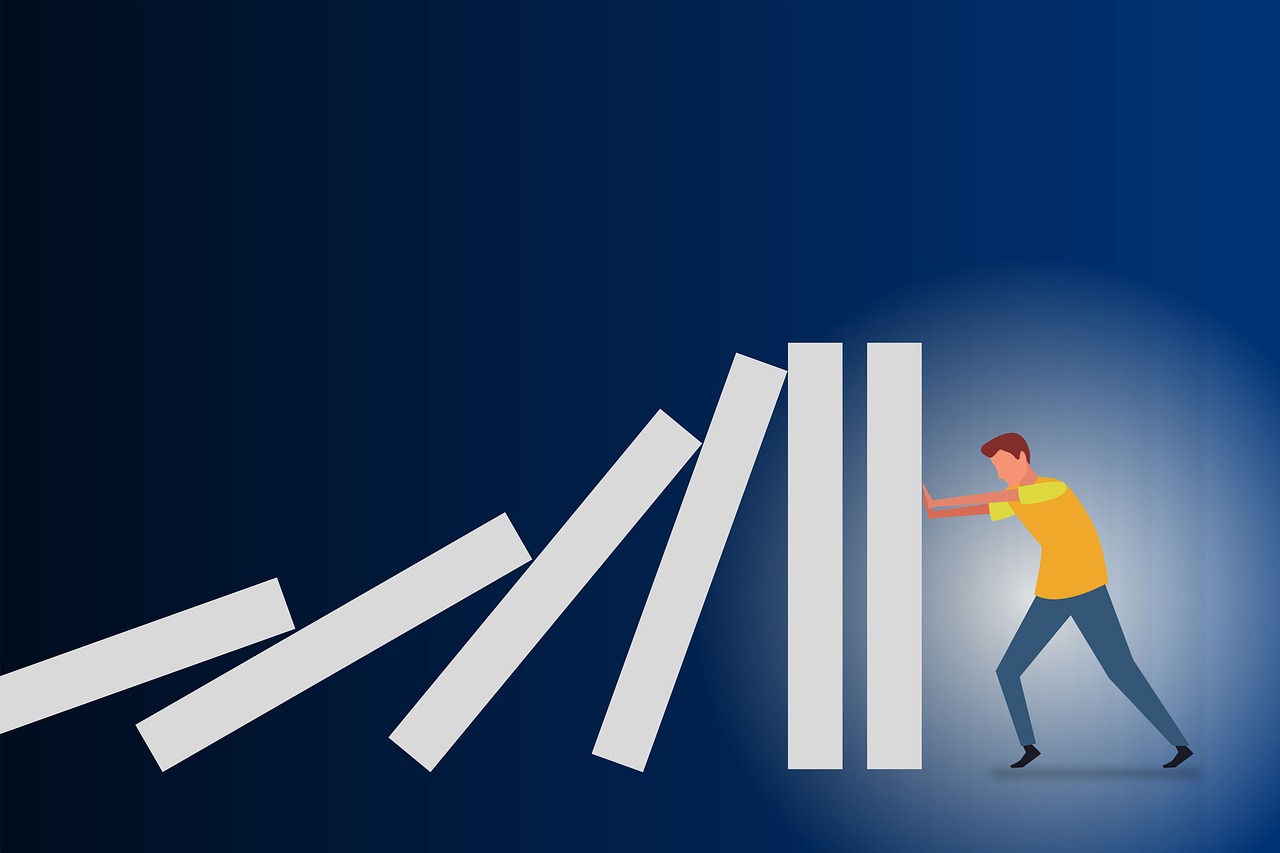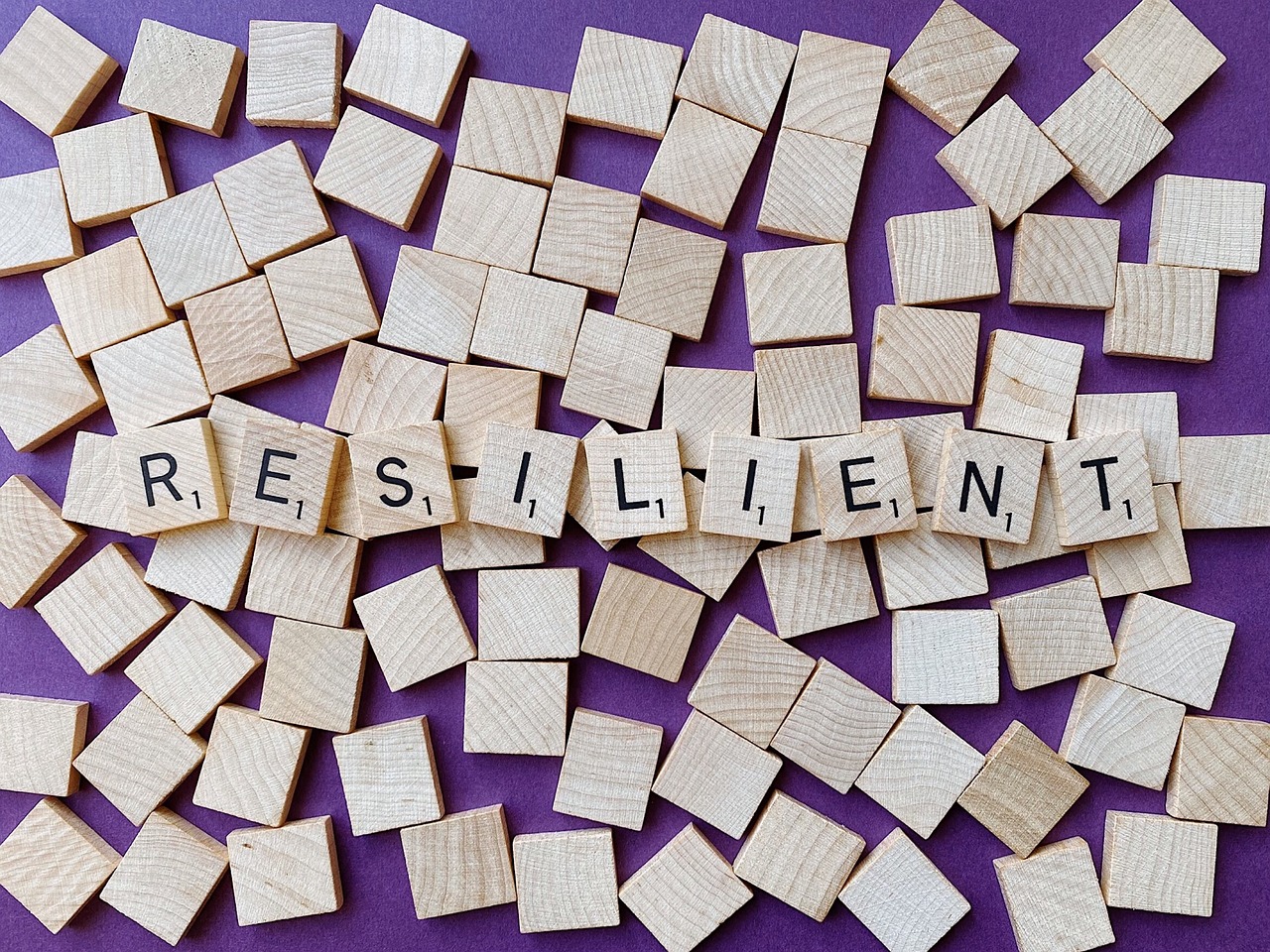Harnessing Resilience to Overcome Virtual Fatigue
In today's fast-paced digital world, virtual fatigue has become a buzzword that resonates with many of us. It's that overwhelming sense of tiredness that creeps in after hours of staring at screens, attending back-to-back meetings, and juggling countless digital tasks. Have you ever wondered why, despite being physically at home, you feel drained and disconnected? This article aims to explore the concept of virtual fatigue, its impact on individuals, and effective strategies to build resilience against its effects in our increasingly digital environment.
Virtual fatigue is not just a fleeting feeling; it's a growing concern in our digital age. Defined as the exhaustion stemming from prolonged engagement with technology, it manifests in various ways. Symptoms can include mental fog, irritability, and a general sense of being overwhelmed. The psychological toll can lead to increased anxiety and stress, while the physical impact might result in headaches, eye strain, and disrupted sleep patterns. Imagine your brain as a smartphone—if you keep it on all day without a break, it will eventually run out of battery. Understanding these symptoms is the first step in combating virtual fatigue.
With remote work becoming the norm for many, the prevalence of virtual fatigue has surged. Working from home, while offering flexibility, often blurs the lines between professional and personal life. The constant influx of emails, virtual meetings, and digital distractions can lead to feelings of exhaustion and disengagement. It's like being on a never-ending treadmill—you're moving, but not really getting anywhere. The challenge lies in finding balance amidst the chaos of our digital lives.
One of the most significant contributors to virtual fatigue is the sense of isolation that often accompanies remote work. While technology connects us, it can also create emotional distance. Many remote workers face challenges such as loneliness and a lack of social interaction, which can exacerbate feelings of fatigue. Think about it: when was the last time you had a spontaneous chat at the water cooler? These small interactions play a vital role in our emotional well-being. In a virtual world, fostering social connections becomes essential to mitigate these feelings.
To combat isolation, it's crucial to implement strategies that encourage connection in a virtual environment. Here are some actionable tips:
- Schedule Virtual Coffee Breaks: Just like you would in an office, set aside time to chat with colleagues over coffee.
- Join Online Communities: Engage in forums or groups that align with your interests to meet new people.
- Participate in Team-building Activities: Encourage your workplace to organize virtual team-building exercises to strengthen bonds.
By actively seeking out these connections, you can create a sense of community that helps alleviate feelings of loneliness and, in turn, reduces virtual fatigue.
While technology can lead to fatigue, it can also enhance connections if used wisely. Instead of mindlessly scrolling through social media, consider using digital tools to foster genuine interactions. For instance, video calls can provide a more personal touch than emails or chats. Set up regular check-ins with your team to maintain that human element in your work. Remember, the goal is to use technology as a bridge, not a barrier.
Establishing clear boundaries is crucial for managing virtual fatigue. It’s all too easy to let work seep into personal time, especially when your office is just a few steps away. To maintain a healthy work-life balance, consider the following:
- Create a Dedicated Workspace: Designate a specific area in your home for work to help mentally separate work from leisure.
- Set Work Hours: Stick to a schedule that allows you to disconnect after hours, just like you would in a traditional office.
- Limit After-Hours Communication: Avoid checking emails or messages outside of your designated work hours.
By setting these boundaries, you can protect your personal time and reduce the risk of burnout.
Resilience is key to overcoming virtual fatigue. It’s about bouncing back from challenges and maintaining a positive mindset, even when the digital landscape feels overwhelming. Developing personal resilience can be achieved through various techniques, such as mindfulness and self-care practices.
Practicing mindfulness and self-care can significantly reduce feelings of fatigue. Incorporating activities like meditation, yoga, or even simple breathing exercises into your routine can help ground you and promote mental well-being. It's essential to take breaks throughout your workday to recharge. Think of it as hitting the refresh button on your computer—sometimes, you just need to pause to improve performance.
Sometimes, professional help is necessary to navigate the complexities of virtual fatigue. Seeking therapy or counseling can provide a safe space to address deeper issues related to mental health. A professional can offer tailored strategies and support to help you cope with the challenges of the digital world. Remember, reaching out for help is a sign of strength, not weakness.
Q: What are the signs of virtual fatigue?
A: Signs include mental fog, irritability, eye strain, and feelings of overwhelm.
Q: How can I combat feelings of isolation while working remotely?
A: Schedule virtual coffee breaks, join online communities, and participate in team-building activities.
Q: Why is setting boundaries important?
A: Setting boundaries helps maintain a healthy work-life balance and prevents burnout.
Q: What self-care practices can help reduce virtual fatigue?
A: Mindfulness, meditation, and regular breaks can significantly improve mental well-being.

Understanding Virtual Fatigue
Virtual fatigue is a growing concern in our digital age, affecting countless individuals who navigate their daily lives through screens. But what exactly is it? At its core, virtual fatigue refers to the overwhelming sense of tiredness and exhaustion that arises from prolonged exposure to virtual environments, such as video calls, online meetings, and constant digital communication. It's like running a marathon, where instead of physical exertion, your mind is racing and your eyes are straining, leaving you feeling drained and disconnected.
The symptoms of virtual fatigue can vary widely, manifesting in both psychological and physical forms. Psychologically, individuals may experience a lack of focus, increased irritability, or even feelings of anxiety and depression. Physically, symptoms can include headaches, eye strain, and a general sense of malaise. It's important to recognize these signs early on to prevent further escalation. Below is a brief overview of common symptoms:
| Symptom | Description |
|---|---|
| Eye Strain | Discomfort or pain in the eyes after prolonged screen time. |
| Headaches | Frequent headaches often triggered by screen glare or tension. |
| Lack of Focus | Difficulty concentrating on tasks, leading to decreased productivity. |
| Emotional Exhaustion | Feeling overwhelmed, anxious, or irritable due to constant digital engagement. |
As we delve deeper into the impact of virtual fatigue, it’s essential to understand the psychological and physical toll it takes on individuals. The constant barrage of notifications, the pressure to respond instantly, and the demands of virtual interactions can create a perfect storm of stress and fatigue. Imagine trying to juggle multiple balls in the air; eventually, something is going to drop. The same principle applies here—our mental resources are finite, and overextending ourselves in a digital landscape can lead to burnout.
Moreover, the nature of remote work has exacerbated these feelings. When your home becomes your office, the lines between work and personal life blur, making it challenging to disconnect. This lack of separation can lead to a chronic state of alertness, where you're always "on," further contributing to feelings of fatigue.
In conclusion, understanding virtual fatigue is the first step toward combating its effects. By recognizing the symptoms and acknowledging the psychological and physical toll it takes, individuals can begin to implement strategies to mitigate its impact. Remember, just as you wouldn’t ignore the warning lights on your car dashboard, it’s crucial to pay attention to the signs of virtual fatigue before they escalate into more serious issues.

The Impact of Remote Work
Remote work has transformed the landscape of employment, offering flexibility and convenience that many workers had long dreamed of. However, this shift has also led to a significant rise in virtual fatigue, a phenomenon that many are only beginning to understand. The blend of professional and personal life can create a unique set of challenges that contribute to feelings of exhaustion and disengagement. Imagine working in your pajamas one day and then struggling to separate your work from your home life the next. It's a double-edged sword.
One of the most profound impacts of remote work is the blurring of boundaries. When your home becomes your office, it can feel like you're always "on." This constant connectivity can lead to a sense of pressure to be available at all times, which can be mentally draining. In fact, a recent study found that remote workers often put in more hours than their in-office counterparts, leading to an increase in burnout rates. The irony? The very freedom that remote work provides can become a source of stress.
Furthermore, the lack of face-to-face interaction can exacerbate feelings of isolation. When you’re used to the buzz of an office environment, the shift to a solitary workspace can feel like a plunge into silence. This isolation can lead to emotional challenges, including anxiety and loneliness. According to a survey, about 60% of remote workers reported feeling isolated, which can significantly affect their overall productivity and job satisfaction.
Consider the following factors that contribute to virtual fatigue in a remote work setting:
- Increased Screen Time: Zoom meetings, emails, and instant messaging can lead to a phenomenon known as "Zoom fatigue." The more time we spend in front of screens, the more drained we feel.
- Distractions at Home: While working from home can be convenient, it also introduces distractions that can hinder focus, such as household chores or family responsibilities.
- Lack of Routine: The absence of a structured workday can lead to irregular hours and unhealthy work habits, further compounding feelings of fatigue.
In conclusion, while remote work offers undeniable advantages, it also presents unique challenges that can lead to virtual fatigue. Understanding these impacts is the first step toward addressing them and finding a balance that allows for productivity without sacrificing mental well-being. By recognizing the signs of fatigue, individuals can take proactive steps to mitigate its effects and create a healthier work-life dynamic.
Q1: What is virtual fatigue?
Virtual fatigue refers to the exhaustion and burnout that can occur from prolonged exposure to digital environments, such as video calls and constant online communication.
Q2: How can I combat virtual fatigue?
To combat virtual fatigue, consider setting clear boundaries for work hours, taking regular breaks, and engaging in activities that promote mental well-being, such as mindfulness or physical exercise.
Q3: Is remote work more exhausting than traditional office work?
Many remote workers report higher levels of fatigue due to factors like increased screen time, isolation, and the blending of work and personal life, which can lead to burnout.

Isolation and Loneliness
In our fast-paced digital world, have become common companions for many remote workers. Imagine working from home, surrounded by the comforts of your own space, yet feeling as though you're adrift in an ocean of solitude. This paradox can be disheartening and is often a significant contributor to virtual fatigue. The absence of face-to-face interactions means that we miss out on the spontaneous conversations and social cues that happen naturally in a physical office environment. These moments, however small, play a crucial role in fostering a sense of belonging and community.
When isolated, individuals may experience a range of emotional challenges. Feelings of disconnection can lead to decreased motivation and productivity, making it difficult to stay engaged with work. The psychological effects are real and can manifest in various ways, including anxiety, depression, and a general sense of hopelessness. It’s like trying to run a marathon without ever leaving your couch; the effort feels monumental, yet the rewards seem distant.
Moreover, the lack of social interaction can exacerbate feelings of loneliness, leading to a vicious cycle. As remote workers retreat further into their digital screens, they may inadvertently withdraw from the very connections that could lift their spirits. It’s essential to recognize that human beings are inherently social creatures, and our well-being is closely tied to our relationships with others. To combat these feelings, we must actively seek out ways to foster connections, even from a distance.
Here are a few strategies to combat isolation:
- Schedule Virtual Coffee Breaks: Set aside time to chat with colleagues, just like you would in a physical office.
- Join Online Communities: Engage in forums or social media groups related to your interests or profession.
- Participate in Team Activities: Encourage your team to organize virtual games or social events to strengthen bonds.
In summary, while the digital landscape offers flexibility, it also poses significant challenges regarding isolation and loneliness. Recognizing these feelings is the first step toward building a supportive virtual community. By taking proactive steps to connect with others, remote workers can not only mitigate the effects of virtual fatigue but also enrich their overall work experience.

Strategies for Connection
In a world where our screens often feel like the only thing connecting us, it's crucial to proactively foster relationships that can help combat the isolation that comes with remote work. The key here is to be intentional about creating those connections, even when you’re miles apart. Think of it like tending to a garden; if you don’t nurture it, the flowers will wilt. Here are some effective strategies to cultivate those essential connections in a virtual environment.
First off, consider scheduling regular catch-up sessions with your colleagues or friends. Just like you would for a coffee break in the office, set aside time each week for a virtual chat. This can be a simple video call where you discuss work, share personal updates, or even just enjoy a cup of coffee together. These scheduled interactions can help maintain a sense of normalcy and camaraderie, making the digital space feel less isolating.
Another effective approach is to leverage social media and messaging apps to stay connected. Create group chats or forums where you can share updates, memes, or even motivational quotes. This not only keeps the lines of communication open but also builds a sense of community. It’s like having a virtual water cooler where everyone can drop by for a quick chat or a laugh.
Additionally, don’t underestimate the power of virtual team-building activities. Organize online games, trivia nights, or even book clubs. These activities not only provide a break from the usual work routine but also encourage collaboration and strengthen bonds among team members. Here’s a quick table to illustrate some fun activities you can try:
| Activity | Description |
|---|---|
| Virtual Trivia | Host a trivia night using online platforms where teams can compete for fun prizes. |
| Online Escape Rooms | Engage in a virtual escape room challenge that requires teamwork and problem-solving. |
| Book Club | Choose a book to read and discuss it during a weekly video call. |
Lastly, make it a point to check in on your colleagues or friends regularly. A simple message to ask how they’re doing can go a long way. It shows that you care and are invested in their well-being. Remember, building connections is not just about professional relationships; it’s about creating a support network that can uplift you during challenging times.
In summary, the strategies for connection in a virtual world are all about being proactive and intentional. By scheduling regular interactions, utilizing social media, engaging in team-building activities, and checking in with others, you can create a vibrant and supportive virtual community. These connections will not only help alleviate feelings of isolation but also enhance your overall well-being in this digital landscape.
- What is virtual fatigue? Virtual fatigue refers to the exhaustion and burnout experienced from prolonged use of digital devices, often exacerbated by remote work.
- How can I reduce feelings of isolation while working from home? Regularly connecting with colleagues, participating in virtual activities, and establishing a supportive network can help mitigate feelings of isolation.
- Are there any tools that can help improve virtual connections? Yes! Tools like Zoom, Slack, and Microsoft Teams can facilitate communication and collaboration among remote teams.

Utilizing Technology Wisely
In our hyper-connected world, technology is both a blessing and a curse. While it enables us to stay in touch with colleagues, friends, and family, it can also lead to feelings of overwhelm and fatigue. So, how can we harness the power of technology without letting it drain our energy? The key lies in utilizing it wisely.
First and foremost, it's essential to choose the right tools for communication and collaboration. Not all platforms are created equal; some may be more effective for your needs than others. For instance, if you're in a creative field, tools like Miro or Slack can foster collaboration more effectively than traditional email. By selecting tools that enhance productivity and engagement, you can minimize the feeling of being bogged down by endless notifications and messages.
Moreover, setting specific times for checking emails and messages can drastically reduce the constant barrage of information, allowing you to focus on your work without interruptions. Imagine your day as a race; if you keep stopping to check your phone, you’ll never reach the finish line. By batching your communication tasks, you can create a more structured approach to your day, leading to increased productivity and less stress.
Another effective strategy is to leverage technology for mindfulness and well-being. Apps like Headspace or Calm can guide you through short meditation sessions, helping you to recharge during the day. Consider setting reminders to take short breaks, during which you can step away from your screen and engage in a few minutes of deep breathing or stretching. This simple act can help you reset and combat feelings of fatigue.
Furthermore, technology can help maintain social connections, which is vital for combating feelings of isolation. Video calls can bring a sense of camaraderie that texts and emails simply can't replicate. Scheduling virtual coffee breaks or happy hours with colleagues can foster a sense of community and belonging. It’s like having a chat over the water cooler, just in a digital space!
To sum it up, utilizing technology wisely means being intentional about how and when you use it. By selecting the right tools, setting boundaries around communication, incorporating mindfulness practices, and fostering social connections, you can create a more balanced digital experience. Remember, technology should serve you, not the other way around.
- What is virtual fatigue? Virtual fatigue refers to the exhaustion and mental drain caused by prolonged use of digital devices and virtual communication platforms.
- How can I reduce virtual fatigue? You can reduce virtual fatigue by setting boundaries on technology use, taking regular breaks, and practicing mindfulness.
- Are there specific tools to help with virtual fatigue? Yes, tools like project management software and communication platforms can help streamline tasks and reduce the feeling of being overwhelmed.
- Can mindfulness really help with virtual fatigue? Absolutely! Mindfulness practices can improve mental clarity and reduce stress, making them effective in combating virtual fatigue.

Setting Boundaries
In our hyper-connected world, where the lines between work and personal life often blur, has never been more crucial. Imagine trying to juggle flaming torches while riding a unicycle—sounds chaotic, right? That’s what it feels like when we don’t establish clear limits around our digital engagements. When you're working from home, the temptation to answer emails late at night or join virtual meetings during your lunch break can lead to a never-ending cycle of stress and fatigue.
To combat this, it’s essential to create a structured routine that delineates your work hours from your personal time. This doesn’t just mean clocking in and out; it’s about being intentional with your time. Consider setting specific hours for when you’ll be available for work-related tasks and when you’ll unplug. For instance, you might decide that after 6 PM, your time is solely dedicated to family, hobbies, or relaxation. By doing this, you're not just protecting your mental health; you're also enhancing your productivity during work hours.
Another effective strategy is to create a designated workspace. This doesn’t have to be a home office—just a corner of your living room or a cozy nook can work wonders. When you have a physical space that you associate with work, it becomes easier to step away from it at the end of the day. You might even consider using a visual cue to signal the start and end of your workday. For example, a simple act like closing your laptop or putting on headphones can serve as a reminder to yourself that it’s time to shift gears.
Furthermore, it’s vital to communicate your boundaries to others. This can be particularly challenging if you’re living with family or roommates who might not understand your work commitments. Have an open conversation about your work schedule and the importance of uninterrupted time. You could even create a simple “do not disturb” sign to hang on your door during important meetings or focused work sessions. This not only helps you stay focused but also encourages those around you to respect your work time.
Lastly, remember that boundaries are not just about saying “no.” They also involve saying “yes” to the things that truly matter in your life. By setting limits on your work commitments, you open up space for self-care, hobbies, and social interactions that can help rejuvenate your mind and spirit. Think of it as creating a protective bubble around your well-being—one that allows you to thrive both personally and professionally.
- What are some signs that I need to set boundaries? If you find yourself working late into the night, feeling constantly exhausted, or struggling to disconnect from work, it may be time to reassess your boundaries.
- How can I communicate my boundaries effectively? Be clear and assertive when discussing your needs with colleagues and family. Use “I” statements to express how certain behaviors affect you.
- Can setting boundaries improve my productivity? Absolutely! Clear boundaries can help you focus better during work hours, leading to increased efficiency and reduced burnout.

Building Personal Resilience
In today's fast-paced digital world, building personal resilience has become more crucial than ever. It’s like developing an armor that protects you from the relentless waves of virtual fatigue crashing against you. Resilience is not merely about bouncing back; it's about growing stronger in the face of adversity. When we talk about resilience, we often envision someone who can withstand challenges, but it’s more than just that. It’s about cultivating a mindset that allows you to thrive despite the chaos around you. So, how can you nurture this vital skill in your life?
First off, self-awareness plays a pivotal role in building resilience. It’s essential to understand your emotional triggers and how they affect your well-being. When you are aware of what drains your energy, you can take proactive steps to mitigate those effects. For instance, if you notice that long video calls leave you feeling exhausted, consider scheduling shorter meetings or incorporating breaks in between. This awareness not only helps you manage your energy better but also empowers you to take control of your environment.
Another key aspect is mindfulness. Practicing mindfulness can significantly enhance your resilience by keeping you grounded in the present moment. It’s easy to get lost in the digital noise, but taking time to pause and breathe can work wonders. Techniques such as meditation, deep breathing exercises, or even a short walk can help clear your mind. By creating these small moments of stillness, you allow yourself the space to recharge and refocus, making it easier to tackle the challenges ahead.
Moreover, fostering a strong support system is vital. Humans are inherently social beings, and having a network of friends, family, or colleagues can provide the emotional support needed to navigate tough times. Engaging in regular check-ins, whether through video calls or messaging, can help maintain those connections. Remember, it’s not just about quantity; it’s about quality. Having a few close connections where you can share your thoughts and feelings can significantly bolster your emotional resilience.
In addition, self-care is not just a buzzword; it’s a necessity. Incorporating self-care routines into your daily life can help replenish your energy and improve your mental health. This can include a variety of activities such as:
- Exercising regularly to boost your mood
- Engaging in hobbies that bring you joy
- Setting aside time for relaxation and leisure
These activities serve as a reminder that taking care of yourself is not selfish; it’s essential for maintaining your resilience in the long run.
Lastly, don’t hesitate to seek professional support if you find yourself overwhelmed. Sometimes, talking to a therapist or counselor can provide you with new perspectives and coping strategies. They can help you unpack feelings related to virtual fatigue and develop a personalized plan to enhance your resilience.
In summary, building personal resilience is a multifaceted process that requires self-awareness, mindfulness, strong social connections, self-care, and sometimes professional guidance. By investing in these areas, you can create a robust framework that not only helps you combat virtual fatigue but also empowers you to thrive in any situation life throws your way.
- What is personal resilience? Personal resilience is the ability to adapt and bounce back from adversity, stress, or challenges, allowing individuals to maintain their mental well-being.
- How can I improve my resilience? You can improve your resilience by practicing mindfulness, building strong social connections, engaging in self-care, and seeking professional support when needed.
- Why is self-care important for resilience? Self-care helps replenish your energy, reduces stress, and enhances overall mental health, making it easier to cope with challenges.

Mindfulness and Self-Care
In today's fast-paced digital world, where screens dominate our attention and notifications vie for our focus, the importance of mindfulness and self-care cannot be overstated. These practices serve as vital tools for combating virtual fatigue, allowing us to pause, reflect, and recharge our mental batteries. Imagine your mind as a smartphone; if you keep it running apps without a break, it will eventually lag or shut down. Similarly, our brains need time to process, rejuvenate, and reset.
Mindfulness, at its core, is about being present in the moment. It encourages us to step away from the chaos of our busy lives and tune into our thoughts, feelings, and surroundings. By practicing mindfulness, we can create a buffer against the overwhelming nature of constant digital engagement. Techniques such as deep breathing, meditation, or even a simple five-minute break to observe our surroundings can help ground us. For instance, taking a moment to focus on your breath can reduce anxiety and improve focus, akin to hitting the refresh button on your mind.
Incorporating self-care into our daily routines is equally crucial. Self-care is not just about indulgence; it’s about prioritizing our mental, emotional, and physical well-being. Think of it as maintaining a car; regular check-ups and maintenance keep it running smoothly. Here are some effective self-care strategies to consider:
- Establish a Routine: Create a daily schedule that includes time for work, breaks, and leisure. Consistency helps in managing stress and fatigue.
- Limit Screen Time: Set boundaries on your digital usage, especially outside of work hours. This can help reduce feelings of burnout.
- Engage in Physical Activity: Regular exercise, even a short walk, can boost your mood and energy levels.
- Connect with Nature: Spend time outdoors. Nature has a calming effect and can refresh your mind.
- Practice Gratitude: Take a moment each day to reflect on what you are grateful for. This simple act can shift your mindset and reduce stress.
By actively engaging in mindfulness and self-care, we can cultivate resilience against virtual fatigue. It's essential to remember that these practices are not one-time fixes but rather ongoing commitments to ourselves. Just as we would nourish a plant with water and sunlight, we must nourish our minds and bodies with care and attention.
In conclusion, embracing mindfulness and self-care is about creating a sustainable lifestyle that prioritizes our well-being amidst the chaos of the digital age. By recognizing the signs of fatigue and implementing these strategies, we can foster a healthier relationship with technology and enhance our overall quality of life.
1. What is mindfulness?
Mindfulness is the practice of being present and fully engaged in the moment, without judgment. It involves focusing on your thoughts, feelings, and surroundings.
2. How can self-care help with virtual fatigue?
Self-care strategies can help you recharge mentally and physically, reducing feelings of exhaustion and improving your overall well-being.
3. Can mindfulness be practiced anywhere?
Yes! Mindfulness can be practiced anywhere, whether at home, at work, or outdoors. It only takes a few moments to focus on your breath or surroundings.
4. How often should I practice mindfulness?
Ideally, mindfulness should be practiced daily. Even a few minutes each day can make a significant difference in managing stress and fatigue.
5. What are some quick self-care activities?
Some quick self-care activities include taking a short walk, enjoying a cup of tea, journaling, or practicing deep breathing exercises.

Seeking Professional Support
In the hustle and bustle of our digital lives, it’s easy to overlook the toll that constant connectivity takes on our mental health. When virtual fatigue sets in, it can feel like an insurmountable weight pressing down on us. This is where can make all the difference. Just as we wouldn’t hesitate to consult a doctor for physical ailments, reaching out to a mental health professional can be a crucial step in addressing the emotional and psychological challenges that come with virtual fatigue.
Many individuals underestimate the power of talking to someone trained to help. Therapists and counselors provide a safe space to express feelings, explore coping mechanisms, and develop strategies tailored to your unique situation. They can help you identify patterns of behavior that contribute to your fatigue and work with you to create a personalized plan for improvement. It’s like having a coach in your corner, cheering you on as you navigate the often tumultuous waters of remote work and digital interactions.
Moreover, professional help can offer insights that we might not see ourselves. For instance, a therapist may help you recognize that your fatigue could be linked to deeper issues, such as anxiety or unresolved stress. By addressing these underlying problems, you can not only combat virtual fatigue but also enhance your overall quality of life. Here’s a quick overview of the benefits of seeking professional support:
| Benefit | Description |
|---|---|
| Personalized Strategies | Professionals can help tailor coping strategies that fit your specific circumstances. |
| Safe Space | A judgment-free environment to express your thoughts and feelings. |
| Insightful Feedback | Gain new perspectives on your challenges and behaviors. |
| Emotional Support | Access to ongoing support during difficult times. |
In addition to traditional therapy, there are also various online platforms that provide access to mental health professionals. These platforms can be particularly beneficial for those who may feel overwhelmed by the thought of attending in-person sessions. With just a few clicks, you can connect with a therapist via video chat, making it easier to fit mental health care into your busy schedule.
Ultimately, seeking professional support is a sign of strength, not weakness. It’s an acknowledgment that you deserve to feel better and that taking proactive steps towards your mental health is essential. So, if you find yourself struggling with virtual fatigue, consider reaching out to a professional. Remember, just like we maintain our physical health, nurturing our mental well-being is equally important.
- What is virtual fatigue? Virtual fatigue refers to the exhaustion and mental strain that arises from prolonged digital engagement, often experienced by remote workers.
- How can I recognize if I'm experiencing virtual fatigue? Symptoms include persistent tiredness, decreased motivation, irritability, and difficulty concentrating.
- What are some signs that I should seek professional help? If your fatigue is affecting your daily life, relationships, or overall well-being, it may be time to consult a mental health professional.
- Can online therapy be effective? Yes, many people find online therapy to be a convenient and effective way to access mental health support.
Frequently Asked Questions
- What is virtual fatigue?
Virtual fatigue refers to the mental and physical exhaustion that arises from prolonged engagement with digital platforms, often exacerbated by remote work and constant online interactions. It's like running a marathon without ever leaving your couch—exhausting yet seemingly unending.
- What are the symptoms of virtual fatigue?
Symptoms of virtual fatigue can include headaches, eye strain, difficulty concentrating, feelings of isolation, and a general sense of burnout. It's your mind and body signaling that they need a break from the screen overload.
- How does remote work contribute to virtual fatigue?
Remote work can lead to virtual fatigue by blurring the lines between work and personal life, creating a lack of social interaction, and increasing the amount of time spent on digital devices. Imagine trying to work while being constantly bombarded by notifications—it's no wonder so many feel drained!
- What strategies can help combat feelings of isolation?
To combat isolation, consider scheduling regular virtual catch-ups with colleagues, joining online communities related to your interests, or participating in team-building activities. Think of it as planting seeds of connection in a digital garden—you’ll be surprised at how they bloom!
- How can I set boundaries to manage virtual fatigue?
Setting boundaries involves establishing clear work hours, taking regular breaks, and creating a dedicated workspace. It’s like putting up a fence around your garden—protecting your mental space from the weeds of constant digital engagement.
- What are some effective self-care strategies?
Effective self-care strategies include practicing mindfulness, engaging in physical activity, and ensuring you get adequate sleep. Think of self-care as recharging your phone—without it, you’ll run out of battery and be unable to function!
- When should I seek professional support for virtual fatigue?
If virtual fatigue significantly impacts your daily life, relationships, or mental health, it may be time to seek professional support. Just like calling in a mechanic when your car breaks down, sometimes expert help is necessary to get back on track.



















